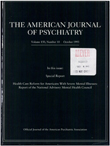Characteristics of 60 adult chronic hair pullers
Abstract
OBJECTIVE: This study was constructed to detail the demographic and phenomenological features of chronic hair pullers as well as to assess psychiatric comorbidity in a sizable study group. METHOD: Subjects were drawn from an outpatient population of chronic hair pullers who had been referred to a trichotillomania clinic or had responded to a newspaper advertisement announcing a treatment study of adults who pull out their hair. Sixty adult chronic hair pullers completed a semistructured interview that focused on their hair-pulling behavior and demographic characteristics and that incorporated screening questions for DSM-III-R axis I disorders. The data were tabulated to derive a comprehensive picture of this group. RESULTS: The typical subject was a 34-year-old woman who had pulled hair from two or more sites for 21 years. All subjects described either tension before or relief/gratification after pulling hair from the primary site, but 17% (N = 10) failed to describe both of these characteristics and thus failed to fulfill the DMS-III-R criteria for trichotillomania. Forty- nine subjects (82%) qualified for past or current axis I diagnoses other than trichotillomania. Several characteristics of the study group suggested phenomenological differences between obsessive-compulsive disorder and trichotillomania. CONCLUSIONS: Adult trichotillomania is a chronic disorder, frequently involving multiple hair sites, and is associated with high rates of psychiatric comorbidity. Its relation to obsessive-compulsive disorder requires further clarification. The tension-reduction requirement in DSM-III-R for the diagnosis of trichotillomania may be overly restrictive.
Access content
To read the fulltext, please use one of the options below to sign in or purchase access.- Personal login
- Institutional Login
- Sign in via OpenAthens
- Register for access
-
Please login/register if you wish to pair your device and check access availability.
Not a subscriber?
PsychiatryOnline subscription options offer access to the DSM-5 library, books, journals, CME, and patient resources. This all-in-one virtual library provides psychiatrists and mental health professionals with key resources for diagnosis, treatment, research, and professional development.
Need more help? PsychiatryOnline Customer Service may be reached by emailing [email protected] or by calling 800-368-5777 (in the U.S.) or 703-907-7322 (outside the U.S.).



